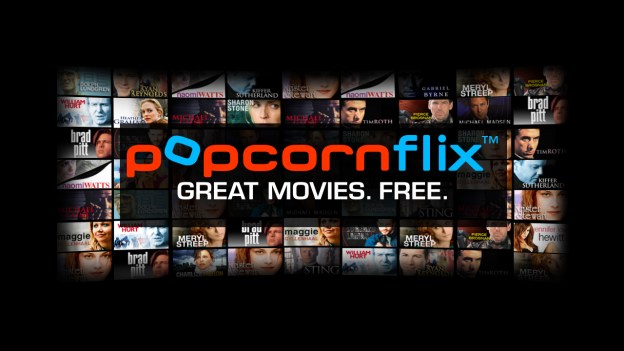Whether you know Popcornflix or not, the movie streaming service wants to get to know you; or, at least, it wants to capture your attention long enough that you’ll consider it alongside your other streaming media favorites.
Launched in beta in March 2011, Popcornflix is a subsidiary of Screen Media Ventures, an independent movie distributor, and offers over 700 feature length movies in about a dozen different genres. The ad-supported business model mirrors that of others like Crackle, Viewster and Hulu in that you can stream films for free with some commercials thrown in to pay the bills.
Much of what Popcornflix offers is of the independent variety, with a library made up of a combination of theatrical releases, indie films, direct-to-video and a few classics. Viewers in the U.S. can watch on the Web, Roku, Xbox 360, Sony Bravia TVs and iOS and Android devices. Support for more connected TVs are currently in the works, but creator Gary Delfiner couldn’t reveal them due to contractual agreements.
The service has spread out into Canada, the U.K., Australia, New Zealand, Germany, France and a few other countries, though access may be limited to one particular platform for some of them.
Netflix may have become the standard for streaming a library of movies to a huge audience by supporting a number of platforms in myriad countries, but Popcornflix isn’t necessarily looking to compete that way. It’s more like Crackle than it is Netfix or Hulu, and that has a lot to do with the kind of content available. Delfiner was quick to point out that Popcornflix isn’t just another run-of-the-mill streaming service.
“I think that the concept of ‘more of the same’ would only be an issue if there was a limited number of potential viewers,” said Delfiner in an interview. “In reality, there are hundreds of millions of potential viewers. Facebook has over a billion users, just to illustrate the size of the digital audience. Any movie streaming platform would be happy with a small fraction of that potential. In addition, the movies are completely different from Crackle.”
Indeed they are. Sifting through the options available may bewilder some, while enticing others. Movies, like any other form of art, are a matter of taste, except that Popcornflix doesn’t seem to have the same breadth of familiarity Crackle does. The two are similar in that they offer indie and B-movies in abundance, though Crackle tends to have more popular Hollywood films at any given time, plus all the TV shows, too.
Delfiner added that Popcornflix updates its library daily, and that some notable films not found on competing services are sometimes offered on a promotional basis for about a month or so.
“It is our active plan to add approximately 50 new movies a month in the short-term and 100 more movies per month starting in the fourth quarter of this year. We believe that more and more movies adds to the appeal of Popcornflix,” he said.
There is some scope already with over a million people in the U.S. downloading the app on Roku devices, making it one of the top channels on the platform. Impressive as the number is, it’s hard to quantify how many users actually use it regularly.
Like Crackle, the platform seems to have a knack for offering movies of established stars when they were younger and breaking into Hollywood, but not much else when it comes to the big names. In that respect, Popcornflix is more a destination for films you probably wouldn’t find elsewhere, assuming you like whatever you find in there.




